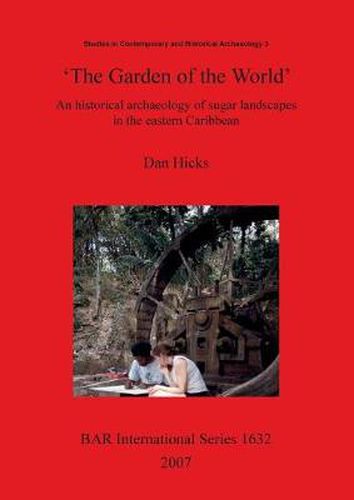Readings Newsletter
Become a Readings Member to make your shopping experience even easier.
Sign in or sign up for free!
You’re not far away from qualifying for FREE standard shipping within Australia
You’ve qualified for FREE standard shipping within Australia
The cart is loading…






This title is printed to order. This book may have been self-published. If so, we cannot guarantee the quality of the content. In the main most books will have gone through the editing process however some may not. We therefore suggest that you be aware of this before ordering this book. If in doubt check either the author or publisher’s details as we are unable to accept any returns unless they are faulty. Please contact us if you have any questions.
This study uses the perspectives of what might be termed the ‘empirical tradition’ of British landscape archaeology that developed in the 1960s and 1970s, especially in industrial archaeology, to explore the early modern history of the ‘garden’ landscapes formed by British colonialism in the eastern Caribbean, and their place in the world. It presents a detailed chronological sequence of the changing material conditions of these English-/British-owned plantation landscapes during the 17th, 18th and early 19th centuries, with particular reference to the origins, history and legacies of the sugar industry. The study draws together the results of archaeological fieldwork and documentary research to present a progressive account of the historical landscapes of the islands of St Kitts and St Lucia: sketching a chronological outline of landscape change. This approach to landscape is characterised by the integration of archaeological field survey, standing buildings recording alongside documentary and cartographic sources, and focuses upon producing accounts of material change to landscapes and buildings. By providing a long-term perspective on eastern Caribbean colonial history: from the nature of early, effectively prehistoric contact and interaction in the 16th century, through early permanent European settlements and into the developed sugar societies of the 18th and 19th centuries, the study suggests a temporal and thematic framework of landscape change that might inform the further development of historical archaeology in the island Caribbean region. The broader aim of the study relates to exploring how archaeological techniques can be used to contribute a highly detailed, empirical case study to the interdisciplinary study of post colonial landscapes and British colonialism. In order to achieve this goal, the study draws upon the techniques of what has been called the ‘empirical tradition’ of landscape archaeology.
$9.00 standard shipping within Australia
FREE standard shipping within Australia for orders over $100.00
Express & International shipping calculated at checkout
This title is printed to order. This book may have been self-published. If so, we cannot guarantee the quality of the content. In the main most books will have gone through the editing process however some may not. We therefore suggest that you be aware of this before ordering this book. If in doubt check either the author or publisher’s details as we are unable to accept any returns unless they are faulty. Please contact us if you have any questions.
This study uses the perspectives of what might be termed the ‘empirical tradition’ of British landscape archaeology that developed in the 1960s and 1970s, especially in industrial archaeology, to explore the early modern history of the ‘garden’ landscapes formed by British colonialism in the eastern Caribbean, and their place in the world. It presents a detailed chronological sequence of the changing material conditions of these English-/British-owned plantation landscapes during the 17th, 18th and early 19th centuries, with particular reference to the origins, history and legacies of the sugar industry. The study draws together the results of archaeological fieldwork and documentary research to present a progressive account of the historical landscapes of the islands of St Kitts and St Lucia: sketching a chronological outline of landscape change. This approach to landscape is characterised by the integration of archaeological field survey, standing buildings recording alongside documentary and cartographic sources, and focuses upon producing accounts of material change to landscapes and buildings. By providing a long-term perspective on eastern Caribbean colonial history: from the nature of early, effectively prehistoric contact and interaction in the 16th century, through early permanent European settlements and into the developed sugar societies of the 18th and 19th centuries, the study suggests a temporal and thematic framework of landscape change that might inform the further development of historical archaeology in the island Caribbean region. The broader aim of the study relates to exploring how archaeological techniques can be used to contribute a highly detailed, empirical case study to the interdisciplinary study of post colonial landscapes and British colonialism. In order to achieve this goal, the study draws upon the techniques of what has been called the ‘empirical tradition’ of landscape archaeology.